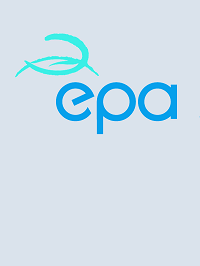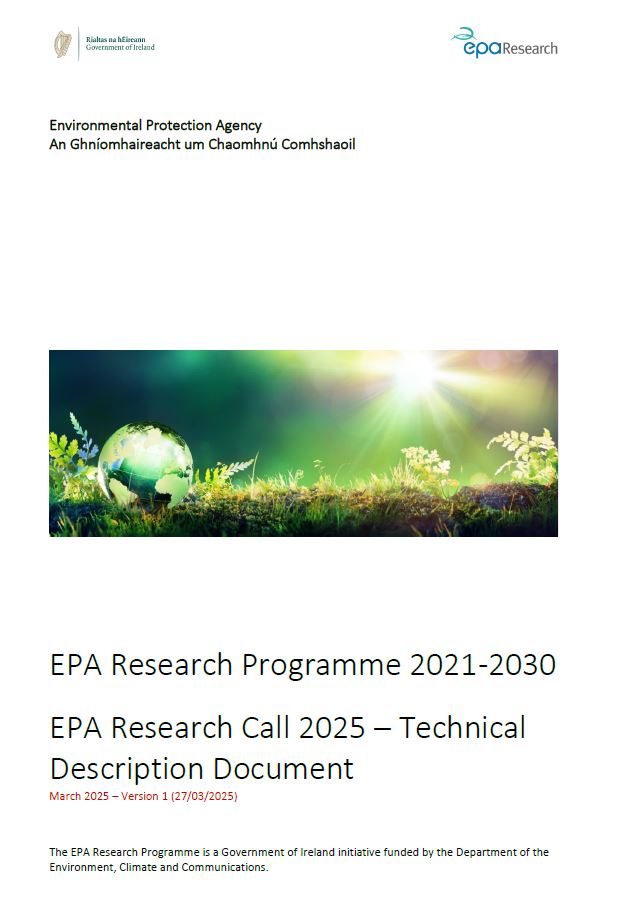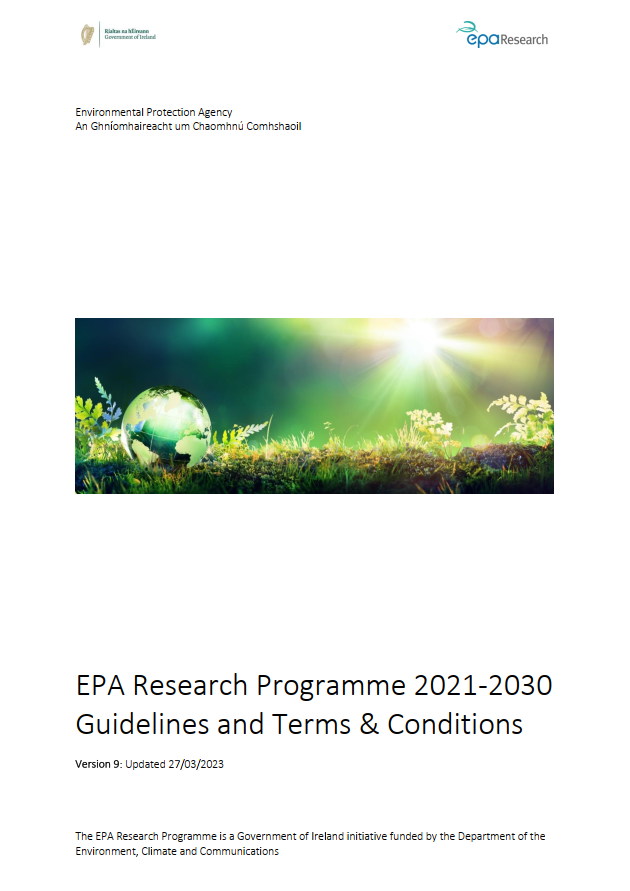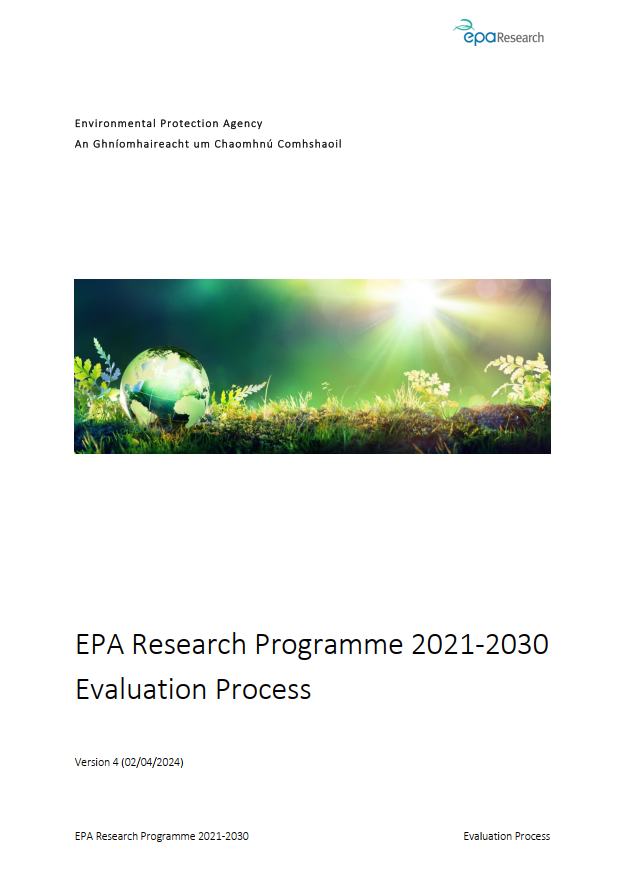Latest Research Publications

Research 485: Specific Management and Robust Targeting of Riparian Buffer Zones
Authors: Daire Ó hUallacháin, Per-Erik Mellander, Simon Parker, Nikki Baggaley, Mark E. Wilkinson, Allan Lilly and Marc Stutter, April 2025
Year: 2025
With many of Irelands surface waters classed as less than the minimum of “good ecological status” under the Water Framework Directive, this research project looked to support optimal targeting and management of riparian margins, in agricultural contexts, for effective management of rivers in Ireland. It delivers a riparian measures database summarising alternative measures for Irish conditions, evaluating their effectiveness and wider ecosystem service benefits. Core to the research is the “Right Measure, Right Place” concept, a key tenet of Ireland’s River Basin Management Plan (2022–2027). Tools were developed to identify locations for maximum impact, using landscape context to prioritise 16 identified mitigation measures. The project aims to help policymakers and other research projects expand beyond traditional approaches to achieve water quality objectives under policies like the Common Agricultural Policy and Water Framework Directive.

Research 484: Framework for Characterising Oligotrophic (3110 and 3160) Lakes Using Practical Methods and Assessment Tools
Authors: Heather T. Lally, Martin Gammell, Emma Gray, Giovanni Cappelli and Cilian Roden, April 2025
Year: 2025
Oligotrophic lake habitats, which are characterised by low accumulation of dissolved nutrient salts are protected freshwater habitats in Ireland. These habitats support limited life forms, mainly algae and macroinvertebrates. This research report, from the "Peat Lakes" project, looks at the potential of these organisms to help in characterising and conserving oligotrophic lakes using practical methods and assessment tools. It assesses and provides findings on water chemistry and data from plant communities, including macrophytes, algal communities (including desmids), and invertebrate communities from 24 water bodies within Atlantic blanket bog landscapes in the west of Ireland. The report makes several recommendations and provides relevant stakeholders from state agencies with important information for the conservation of small water bodies (area ≤ 0.01 km²), to support the monitoring of favourable conservation conditions in oligotrophic lake habitats, under the EU Habitats Directive.

Research 483: Just Resilience and Adaptation in Ireland (JustAdapt)
Authors: Stefano Ceolotto, Niall Farrell, Pranav Kakkar and Anita Vollmer, April 2025
Year: 2025
Both the impacts of climate change and the policy responses to mitigate emissions affect different sections of society in different ways. The JustAdapt research project is the first national-level study to consider socioeconomic vulnerability alongside climate change impacts at a local level in Ireland. It includes modelling extreme weather events to identify where climate impacts and socioeconomic vulnerability coincide, assessing local economic impacts of climate policies, and developing guidelines for incorporating nature-based solutions, equity and justice into climate policy decision-making. Overall, the research offers policymakers, planners, and stakeholders’ insights to design fair, effective, and sustainable climate adaptation policies and strategies, while considering socio-economic vulnerabilities and promoting nature-based solutions for a resilient future.

Research 482: Mitigating Agricultural Impacts on Water Quality through Research and Knowledge Exchange
Authors: Mary Ryan, Cathal O’Donoghue, Denis O’Hora, Jenny McSharry, Pat Murphy, Noel Meehan, Karen Daly, Owen Fenton, Yuting Meng, Paula Cullen, Rossella Di Domenico, Thomas Moloney, LoriRae van Laren, Daniel Urban, Niall McLoughlin, Emma Byrne, Catherine Seale and Maura Farrell, March 2025
Year: 2025
This research report explores improving water quality affected by agricultural practices using a multi-disciplinary approach .It incorporated systems analysis of actors and incentives, spatial analysis on the effects of rural activity, analysis of factors impacting measure adoptions, and socio-economic and behavioural psychology studies to identify drivers of pro-environmental activity. Key findings highlight the necessity of localised solutions, the importance of farm advisors and local farming 'champions', collaboration among stakeholders, and providing knowledge and resources to farmers. It also finds that trust between advisors and farmers, upskilling advisors, and understanding the direct and indirect barriers to farm-level behaviour change are seen as crucial for fostering sustainable agricultural practices. The researchers highlights the importance of incentives and behavioural interventions to promote pro-environmental practices.

Evidence Synthesis Report 5: Study of the Increased Risk of Corrosion with the Use of Fatty Acid Methyl Ester (FAME) as a Diesel Additive
Authors: Carmel Breslin, Gillian Collins, Tara Barwa and Daniele Alves, March 2025
Year: 2025
Biofuels, including fatty acid methyl ester (FAME)-based biodiesels, have the potential to reduce greenhouse gas emissions from our transport sector. However, as these FAME-based biodiesels have become more common, challenges related to storage issues have emerged. FAME is not compatible with all materials, and corrosion issues have been reported during longer-term storage. This evidence synthesis research examines the properties of FAME-based biodiesels, the nature of corrosion reactions associated with these biofuels, the potential risk of corrosion and how to mitigate the risk. The report provides guidance on the general protocols to follow when managing and storing FAME-based biodiesels to mitigate corrosion risks.

Research 481: Addressing the Political Economic Barriers to Climate Adaptation in Ireland
Authors: Alice Brawley-Chesworth, Darren Clarke and Danny Marks, March 2025
Year: 2025
Ireland’s climate is experiencing significant changes that impact the economy, society, and environment. Historically, Ireland’s climate policies have prioritised reducing emissions over adapting to unavoidable climate impacts. With climate-related costs projected to reach billions of euros annually by 2050, this research assesses how current governance structures support or hinder adaptation. Using an innovative political economy approach, the research sought to uncover the interests, incentives, and institutional factors that shape adaptation decisions in the key sectors of agriculture, flood risk management, and water services. The research indicates that political, economic, and social factors hinder Ireland's climate adaptation progress. Barriers include a perceived lack of urgency and the competition between adaptation and immediate short-term priorities. This report provides a roadmap for policymakers, sector leaders, and communities to strengthen adaptation efforts.

Research 480: PestMan: Pesticide Management for Better Water Quality
Authors: Mark G. Healy, Alma Siggins, Paraic C. Ryan, John McGinley, Jennifer Harmon O’Driscoll, Shane Scannell, Per Erik Mellander and Liam Morrison, March 2025
Year: 2025
With world populations increasing the use of pesticides has also increased to bolster crop yields and cater for global food demand. Pesticides released unintentionally from both the agricultural and urban sectors have the potential to enter non-target ecosystems and pose a threat to the environment and human health. The PestMan research project used a multidisciplinary approach, integrating soil processes, molecular biology, engineering, and quantitative risk assessment methodologies to address the environmental and human health impacts of pesticides. It sets out to understand the drivers and pressures of pesticide use, study their fate and persistence, evaluate their risks, and develop a cost-effective, passive remediation method to mitigate these issues. The research developed a multidisciplinary framework to understand and mitigate the environmental and human health impacts of pesticides, focusing on their movement, persistence, risks, and effective remediation strategies

Research 479: A Review of Circular Economy and Bioeconomy Governance in Ireland
Authors: Joanna O’Riordan, Richard Boyle, Seán Keating and Fergal O’Leary, March 2025
Year: 2025
The circular economy and bioeconomy are critical elements of tackling climate change and other global challenges like waste, and pollution, biodiversity loss and water stress, with the aim of using finite resources more sustainably. This research details the complexities and challenges of governance and policy implementation for the circular economy and bioeconomy in Ireland and highlights the need for robust structures, clear roles, leadership, and stakeholder engagement. It concludes that there is an opportunity in the forthcoming Whole-of-Government Circular Economy Strategy and Bioeconomy Strategy to promote meaningful policy coherence and greater collaboration to leverage impactful actions learning and synergies in the implementation of both policy areas.

Research 471: Updated High-resolution Climate Projections for Ireland
Authors: Paul Nolan, March 2025
Year: 2025
Climate change poses significant risks to Ireland’s economy, society and environment. To enable appropriate mitigation and adaptation measure into the future, it is imperative that planners and policymakers are informed about future climate change projections. Addressing knowledge gaps in regional climate projections, this research used scenario-based projections (SSP1-2.6, SSP2-4.5, SSP3-7.0 and SSP5-8.5) to simulate the future climate in Ireland (up to the year 2100). It used the most up-to-date regional climate models at a higher resolution (4 km grid spacing). Broadly in agreement with previous research, this research projects increases in temperature and heatwaves, decreases in frost and snow, increases in both dry and heavy rainfall events, less wind and longer growing seasons among many other things. The research provides Ireland with data to explore its future climate and enables an assessment of impacts across sectors, at regional and local levels.

Research 478: Critical Raw Materials for Ireland for a Resource-Efficient Circular Economy (CIRCLE)
Authors: Ahmar Murtaza, Maham Mahnoor, Anum Inam, Ali Akbar Shah, Muhannad Ahmed Obeidi and Inam Ul Ahad, February 2025
Year: 2025
Global raw material supply is becoming increasingly complex and uncertain, exacerbated by resource scarcity and supply chain vulnerabilities. Critical raw materials (CRM) are vital for industrial growth and competitiveness and a resilient circular economy. Ireland lacked a raw material criticality assessment methodology tailored to its unique economic and resource landscape. To address this gap, the CIRCLE research project developed a CRM methodology tailored to Ireland’s economic and resource landscape. Three methods were developed for assessing raw material criticality with a total of 42 raw materials assessed. The research finding assist stakeholders, including industry and policymakers, in identifying essential materials for various industrial sectors, providing insights into potential supply risks and economic impacts. The report recommends the establishment of a national database to include CRM, Circular material use rate (CMUR) and material flow analysis data.

Research 477: DESIGN – Detection of Environmental Sources of Infectious Disease in Groundwater Networks
Authors: Carlos Chique, Paul Hynds, Liam Burke, Dearbhaile Morris, Michael Ryan and Jean O’Dwyer, February 2025
Year: 2025
In Ireland groundwater sources provide domestic drinking water to approximately 750,000 people in mainly rural areas. Studies that differentiate the exposure pathways and sources are of paramount importance for establishing environmental management solutions that safeguard public health. Ireland currently has the highest incidence of verotoxigenic Escherichia coli (VTEC) infection in the EU, domestic private wells are identified as a likely source of infection. This is a public health concern for public authorities and consumers alike. The DESIGN research project provides the first quantitative assessment of VTEC and Cryptosporidium in domestic groundwater supplies in Ireland. It provides insight into the prevalence, source and transport of VTEC and Cryptosporidium in groundwater supplies. The research developed bespoke, spatio-temporal groundwater management policies, and offers invaluable guidance for future planning, remediation and mitigation of contamination in private wells.

EPA Research Report: One-Page Summary Template
Year: 2025
This template should be used for the preparation of final reports for EPA Research projects.

Research 476: Quantification of the Area of Land Burned and Habitats Affected by Wildfires in Ireland, 2015–2021, and the Resulting Emissions
Authors: Fiona Cawkwell, Emma Chalençon, Ned Dwyer, Clara Felberbauer, Stig Hellebust, Beatriz Martin, Thedmer Postma, Guy Serbin and Dean Venables, February 2025
Year: 2025
The atmospheric emissions and loss of biodiversity arising from wildfires in Ireland are poorly understood. In an Irish context, wildfires are uncontrolled fires in vegetation in the countryside or a wilderness area. This research, from the FLARES project, developed an automated methodology that allows the aftermath of wildfires to be mapped, and emissions to be estimated more accurately using factors determined specifically for Irish vegetation species, in this case gorse, heather and purple moor grass. Using earth observation techniques, the research highlights that burned areas were significantly larger than previously estimated and identifies that up to half of the area burned each year lies within designated protected areas. This mapping approach can be used for historical images, as well as those acquired by current and future sensors. It shows that the efficacy of measures taken to reduce the incidence of fire events can also be evaluated.

Research 475: Effect-based Monitoring for Pharmaceutical Pollution in Ireland
Authors: Fiona Regan and Dylan O’Flynn, January 2025
Year: 2025
This research addressed the significant societal and environmental risks posed by active pharmaceutical ingredients (APIs) in water sources. Even at low concentrations these can affect wildlife and potentially humans. The report identifies the main sources of APIs and reveals that certain pharmaceutical compounds are consistently present at measurable concentrations, emphasising the importance of monitoring near waste water treatment plants and in surface waters both upstream and downstream. In addition, the project aimed to assess the effectiveness of ecotoxicology tests in determining the chronic effects of pharmaceuticals and measure toxicity, or modes of action using a battery of bioassays on individual pharmaceutical compounds and mixtures. Using this comprehensive approach, the research provides a deeper understanding of pharmaceutical pollution to inform strategies to mitigate its impact on the environment and public health.

Research 474: STEP_WISE: Spatiotemporal Epidemiology of Primary Waterborne Infections – Cryptosporidium and VTEC
Authors: Authors: Paul Hynds, Jean O’Dwyer and Martin Boudou, January 2025
Year: 2025
Ireland regularly reports the highest annual crude incidence of verotoxin-producing Escherichia coli (VTEC) enteritis and cryptosporidiosis in Europe, it is typically 5–10 times the European average. Drivers of infections include short-term hydrometeorological conditions, elevated levels of pastoral agriculture and high reliance on septic tanks and private domestic groundwater sources. Forecasts suggest that Ireland will experience significant hydrometeorological pattern changes due to global warming. The STEP_WISE project focused on increasing scientific understanding of the spatiotemporal mechanisms associated with waterborne VTEC enteritis and cryptosporidiosis in Ireland, and determining how these findings could be translated into enhanced environmental, infrastructural and healthcare policies. The research findings provide policy actors with valuable information to address transmission sources, pathways and source–pathway interactions associated with both infections in Ireland.

Research 473: Coastal Lagoons: Ecology and Restoration (CLEAR)
Authors: Brendan O’Connor, Geoff Oliver, Tony Cawley, Cilian Roden, Philip Perrin, Rutger de Wit, Kevin McCaffrey and Aisha O’Connor, January 2025
Year: 2025
Lagoons of good conservation status are dominated by benthic macrophytes rather than phytoplankton blooms. Lady’s Island Lake in Wexford is one of Ireland’s largest lagoons, it is also one of our most eutrophic lagoons, this contrast with the 1980s when clear water was matched by a well-developed benthic sward of widgeon grass. This research conducted a suite of investigations into the reasons for the decline and compared the results with a less impacted saline lagoon. The results show severe degradation in Lady’s Island Lake with over 10 times higher chlorophyll a levels. Runoff of excessive nutrient inputs of nitrogen and possibly phosphorus from agriculture are identified as the main cause of eutrophication. A proposal to replace sea barrier breaching with a pipe also poses a serious risk to reducing lagoonal salinity. The research proposes a range of remedial measures to protect and improve the benthic quality of Lady’s Island Lake and other saline lagoons in Ireland.


